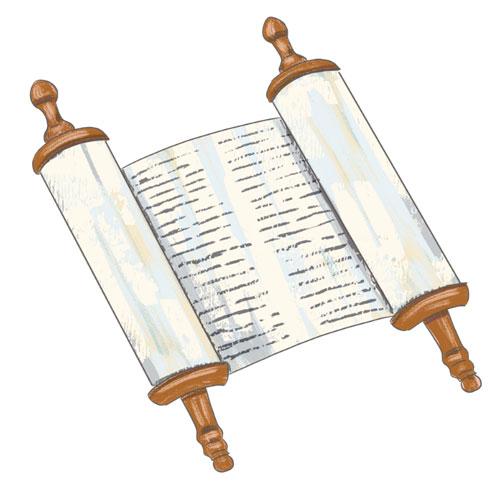
4 minute read
Lifelong Learning: The Jewish Calendar, Chapter 5
So many Torah portions, so few weeks – The Solution
Jason Kay
Advertisement
Last issue, in Chapter 4, we explored a simple problem. In a non-leap year, there are either 50 or 51 Shabbatot. In a leap year, that number increases by a few. And in every year, some of those Shabbatot may fall on holidays for which special Torah readings are assigned. But every single year, there are 54 parashiot (Torah portions), 53 of which must be read on Shabbat as the weekly reading (the last parasha, V’zot Ha’beracha, is read on Simchat Torah). We also looked at some of the “rules” that must be followed. We’ll get to some of those again shortly.
Before jumping to the solution to this puzzle, I would like to thank the brilliant Rabbi Miles Cohen for his help in guiding me on this topic. And as we start exploring the world of double portions, we should realize that, as with so many other topics, we don’t have lots of information about the process that determined how it all works. What were the rationales? Why was it done this way? For so much in Judaism, we simply don’t know and use our best sleuthing skills to figure it out. So, here we go. In a given year, how do we determine which Torah portions to join together? In a non-leap year (12 out of every 19-year cycle), there are always five pairs of double portions:
-Vayakheil/Pekudei (last two portions in Exodus)
-Tazria/Metzora (4th and 5th portions in Leviticus)
-Achrei-Mot/Kedoshim (6th and 7th portions in Leviticus)
-Behar/Bechukotai (last two portions in Leviticus)
-Matot/Massei (last two portions in Numbers)
While the first two pairs seem to share a theme, the last three do not clearly do so. It seems as though the original goal may have been to pair up the last two portions in the various books. That is not an option for Deuteronomy because the last portion is read on Simchat Torah as noted above, and it’s unclear why that wasn’t done for Genesis. The other two pairs, those from Leviticus, help us navigate around Passover. As many b’nai mitzvah know, length was not even remotely considered when choosing which parashiot to pair up.
A leap year typically adds four additional Shabbatot, in which case the first four pairs are read separately. If, however, the additional month adds five extra Shabbatot, the fifth pair from the list is also split. This is a relatively infrequent occurrence. It last happened nine years ago in the year 5774 (it’s currently 5783), and it won’t happen again for 12 more years (although it happens again just three years after that... calendar math is fun). It’s also possible that the additional month of a leap year adds only four Shabbatot, but that Passover falls over two Shabbatot (first and eighth days). In this case, we have to make up the extra week by splitting the fifth pair as well.
In fact, this situation with Passover happened just this past April, when the eighth day fell on Shabbat. In Israel, there is no eighth day of Passover, and therefore, in Israel, they read the regular weekly parasha while we continued to read the special holiday reading. For the next three months, Jews in Israel read a different weekly portion than Jews in the diaspora until we come to the fifth pair and read that as a double portion (there is no double portion in Israel, allowing us to catch up).
A similar thing can occur on Shavuot. Regardless of whether we are in a leap year, if the second day of Shavuot falls on a Shabbat (in Israel, Shavuot is one day only), then Jews in the diaspora combine the portions of Chukat and Balak (the 6th and 7th of Numbers) to quickly fix the offset. Why is there no quick fix for the Passover situation? It’s unclear. And finally, we come to the last piece of the puzzle. The Talmud gives us a rule mandating that the portion of Nitzavim (8th of Deuteronomy) be read prior to Rosh Hashanah. We also know that V’zot Ha’beracha must be read on Simchat Torah making it so that Ha’azinu, the second-to-last portion must be read on the last non-holiday Shabbat before Sukkot. To ensure this happens, Nitzavim and Vayelech are read either as a pair or separately.
And there we have it. A simple challenge with a very complicated solution. What I would have given to be a fly on the wall listening to people figure this out. Then we would know why we do what we do. Of course, knowing the how and needing to figure out the why always leads to great discussion and many lessons learned.






